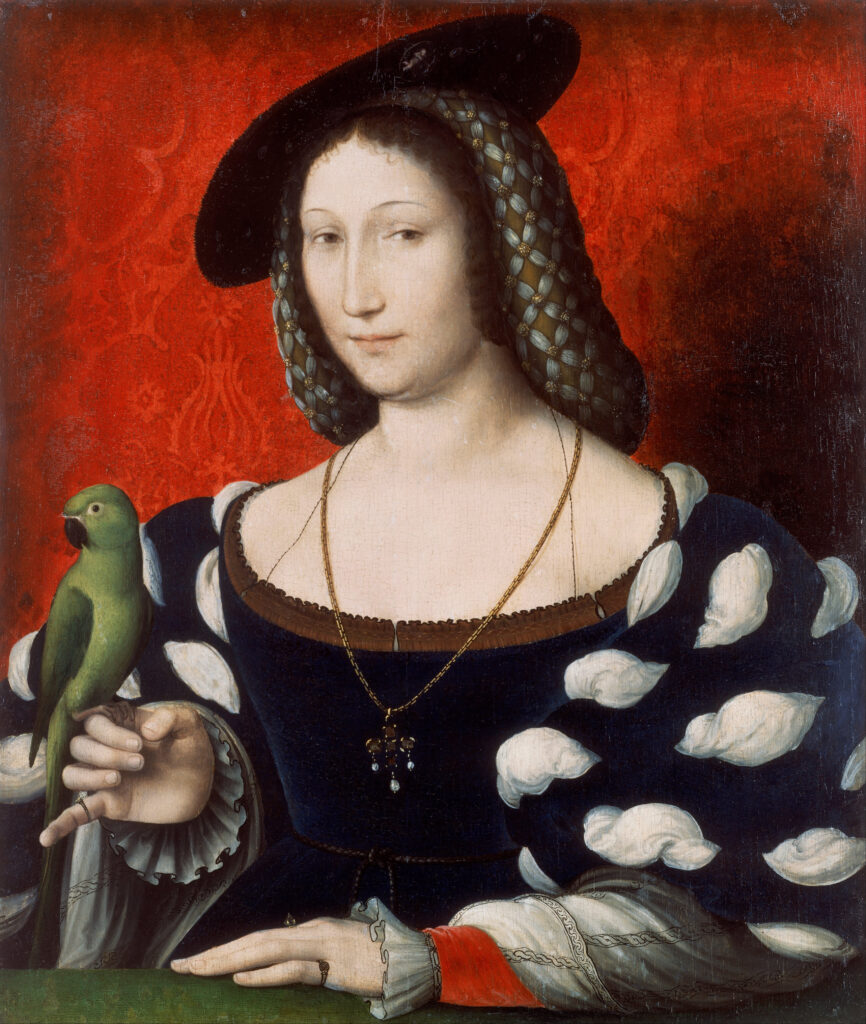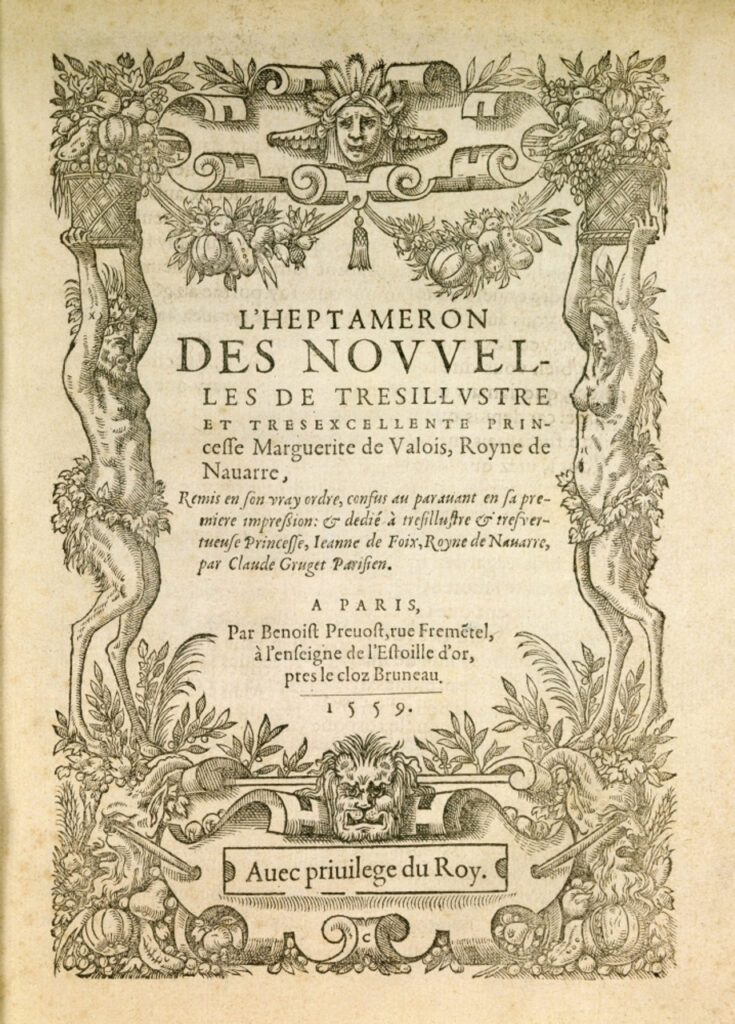
Marguerite de Navarre (1492-1549), born Marguerite d’Angoulême, was a French noblewoman who wrote many works, often in examination of social justice.
Her mother, Louise of Savoy, instilled in Marguerite the importance of education from a very young age. Though she married Charles, Duke of Alençon in 1509, she remained close to her brother François, the future King of France. During her marriage to Charles and her second marriage in 1527 to Henri, the King of Navarre, she remained an active writer and advocated for reform within the Catholic Church.1

Among her many works, Marguerite de Navarre is best known for L’Héptameron (1559), a series of 72 stories that explored themes of sexuality, religion, and lovesickness – a condition recognized as a medical affliction at the time. Physicians in the 16th and 17th centuries, such as Jacques Ferrand, sought to understand lovesickness as either a hereditary condition, an excess of certain humors, or an infection one catches by looking into another’s eyes.2 The symptoms of lovesickness included a loss of appetite, weight loss, difficulty sleeping, and lethargy, all of which Marguerite de Navarre includes in her stories.
Story 9 describes a gentleman who loves a noblewoman, engaged to another, from a much wealthier family. Since he deems a romantic relationship with her impossible he, “[gave] into despair, he lost all appetite. He began to refuse food and water and before long he became an insomniac.”3
i
In Story 50, a gentleman named Jean Pierre is unlucky in his romantic pursuit, causing him to fall into a deep depression that begins to impact his physical health.
“His family called the doctors and seeing that his face was turning yellow, and believing it to be a liver obstruction, they ordered him to be bled.”
Marguerite de Navarre, “Nouvelle 50” in L’Heptameron, (1559), 1.
L’Héptameron is an insightful commentary on the intersection of romance and medical knowledge in the 16th century. Although her contributions were literary, Marguerite de Navarre opens a window to how society and the medical community evaluated the condition of lovesickness in early modern France.
- Brock, Theresa. “Introduction.” In The Visionary Queen: Justice, Reform, and the Labyrinth in Marguerite de Navarre (U. of Delaware Press, 2023). ↩︎
- Jacques Ferrand, “De la Maladie de l’Amour ou Mélancolie Érotique,” ed. Donald Beecher and Massimo Ciavolella, (Reprint Paris, 2010), 13. ↩︎
- Marguerite de Navarre, “Nouvelle 9,” in L’Heptameron, (1559), 2. My translation. ↩︎